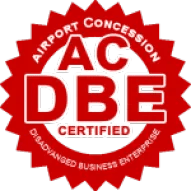1. The Real Cost of a Winter Claim
Consider this real-life scenario: a small retail tenant in suburban Chicago discovered a burst sprinkler line on a Sunday morning after overnight temperatures plunged. The resulting water damage caused $85,000 in property and inventory loss — and the tenant’s coverage didn’t fully extend to business interruption expenses.
While the property insurer covered cleanup and repairs, lost income from several weeks of closure wasn’t fully reimbursed. It’s a classic example of why reviewing business interruption and extra expense coverage is just as important as checking your property limits.
For homeowners, the most common winter claims include:
Frozen or burst pipes (especially in vacant or minimally heated areas)
Ice damming on roofs
Water intrusion from melting snow
Slip-and-fall incidents on icy sidewalks
2. Business and Property Owners: Liability Counts, Too
Winter doesn’t just test buildings — it tests liability coverage. Slip-and-fall accidents are among the most frequent winter claims for Illinois businesses and nonprofits.
If a customer or visitor slips on icy steps or a snow-covered entryway, both the property owner and tenant could be named in a claim. Without adequate general liability coverage and contractor indemnification agreements, legal defense costs can quickly add up.
To minimize risk:
Keep written snow removal contracts with third-party vendors.
Require proof of insurance and hold-harmless language in vendor agreements.
Document all snow removal activity — dates, times, and conditions.
Maintain clear, salted walkways even during off-hours or holidays.
3. Fleet and Commercial Auto: Black Ice and Blind Spots
The first icy morning of the year often brings a surge of commercial auto accidents. Common causes include black ice, sudden stops, and limited visibility.
Employers with fleets or employee drivers should review:
Hired and non-owned auto coverage — crucial if employees use personal vehicles for business errands.
Physical damage and rental reimbursement limits — especially during supply chain delays for vehicle repairs.
Driver safety programs and winter readiness training (tire checks, safe following distance, emergency kits).
According to the National Highway Traffic Safety Administration, nearly 17% of weather-related crashes occur on snowy or icy pavement — making winter one of the most dangerous driving seasons for commercial fleets.[¹]
4. The Importance of Documentation in Winter Claims
A well-documented claim gets settled faster. For winter incidents, encourage employees and homeowners to:
Take photos and videos immediately after the damage occurs.
Record weather conditions and time of loss.
Retain invoices from snow removal or emergency service vendors.
Notify your insurance representative promptly.
Delayed reporting or missing documentation can complicate coverage verification, especially when multiple parties share responsibility (such as landlords, tenants, or vendors).
5. Preventive Maintenance Before the Next Freeze
A quick winter checklist can reduce the likelihood — and severity — of claims:
Inspect roofs and gutters for debris or weak spots.
Insulate exposed pipes and monitor vacant spaces.
Test sump pumps and backup power systems.
Ensure heat is maintained above 55°F in unoccupied areas.
Confirm snow and ice removal contracts are in place and current.
6. The Coverage Review That Pays for Itself
A short midwinter policy review with your insurance advisor can identify potential shortfalls in coverage — especially in areas like:
Business Interruption (lost income and extra expense)
Equipment Breakdown (boilers, HVAC systems, refrigeration)
Umbrella or Excess Liability (slip-and-fall and auto claims)
Commercial Auto Deductibles and Physical Damage
These reviews often uncover outdated limits or exclusions that haven’t been updated in years.
Final Thoughts
Winter weather is unpredictable — but your insurance response shouldn’t be. Whether you operate a small business, manage a nonprofit, or maintain multiple properties, preparedness and coverage alignment are your best defense against costly surprises.
Contact us today for a quick winter coverage review before the next storm hits.
Footnotes
[¹] National Highway Traffic Safety Administration, Traffic Safety Facts: Weather-Related Crashes (2024), U.S. Department of Transportation.
Winter Weather, Real Claims: How a Single Storm Can
Test Your Coverage


When the first snow falls across Chicagoland, it’s more than just a sign of winter — it’s a stress test for your insurance coverage. Each year, early cold snaps and snowstorms trigger claims that expose costly gaps in property, liability, and auto policies.
Transforming small business consulting with dynamic energy.
Service
Trust
(312) 220-9200
© 2025. All rights reserved.


141 W. Jackson Blvd. | Suite 1502 | Chicago, IL | 60604






